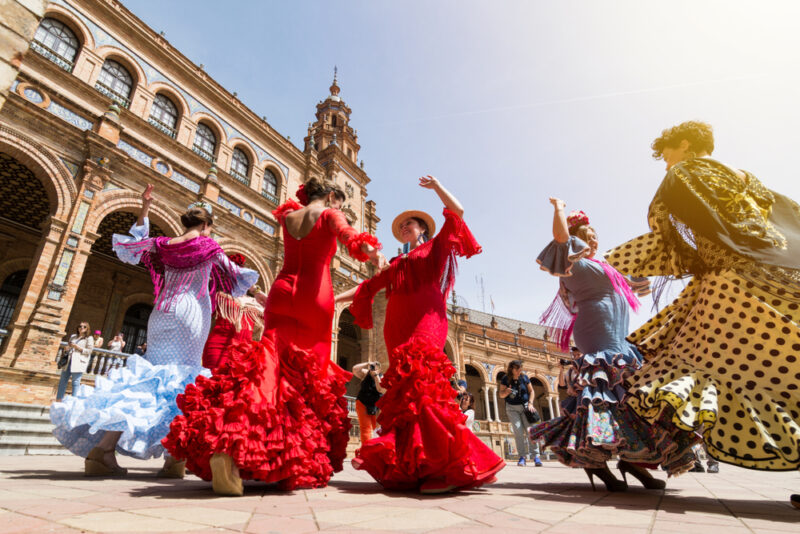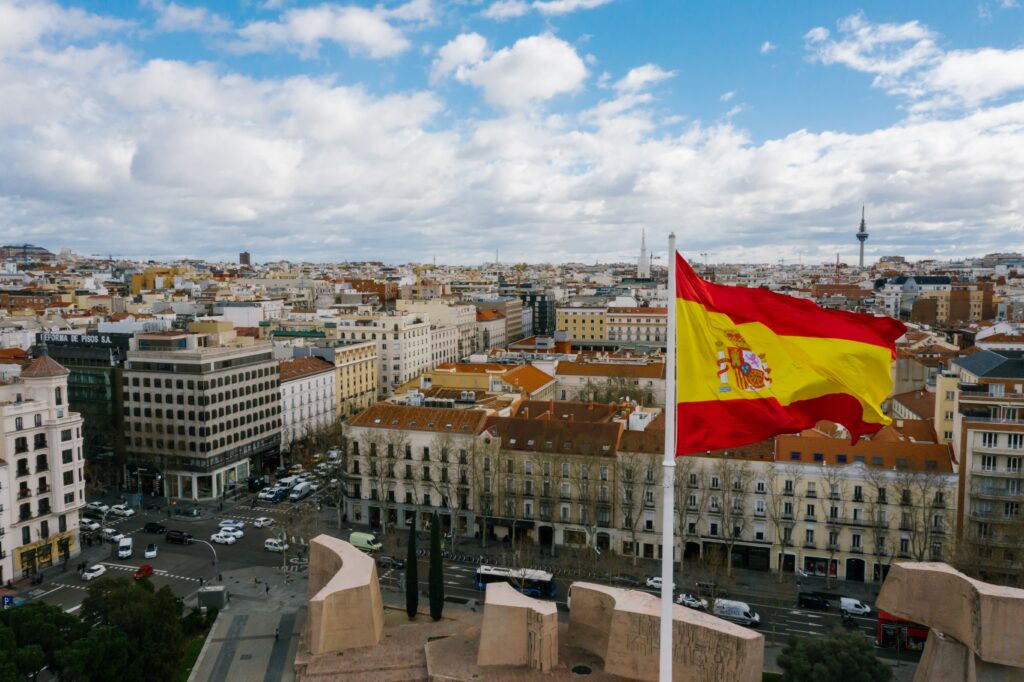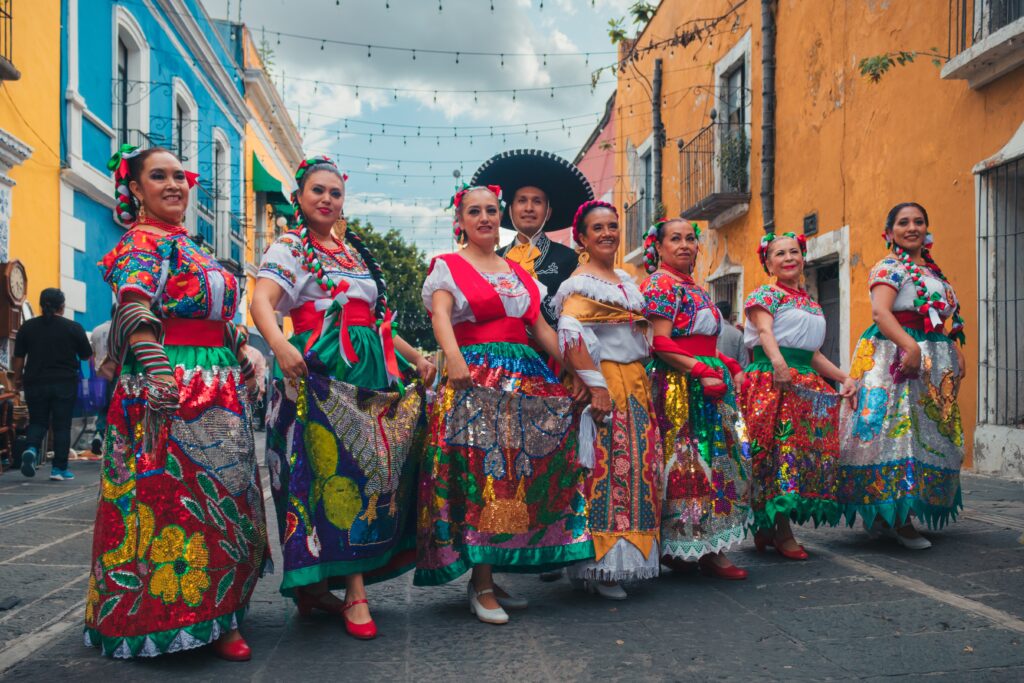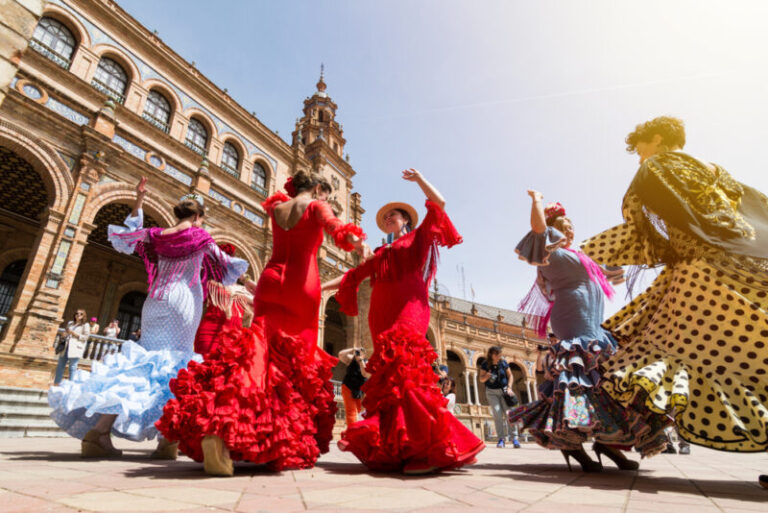
Have you ever wondered where, exactly, does Spanish come from?
Just how much did Spanish evolve over time? I mean, how different is the Spanish we hear and speak today from the language at different stages in its history?
It turns out, the Spanish we now know and love is the result of thousands of years of language development and cultural influence.
Let’s go on a journey to learn about the origin of the Spanish language and its evolution to today’s iteration of the language!
Contents
Download:
This blog post is available as a convenient and portable PDF that you
can take anywhere.
Click here to get a copy. (Download)
5,000 Years Ago: Spanish Roots

In his widely-read book “A History of the Spanish Language,” author Ralph Penny traces the Spanish language all the way back to the Indo-European languages, but it might go even further back than that.
Historians and linguists believe that a family of languages called the Proto-Indo-European languages were spoken until around 3,400 BCE, which then gave way to the development of the languages we know today.
Since these languages never developed a writing system, we don’t know much about them (but we’re fairly sure they existed). But we do know that eventually, they morphed into the Indo-European languages—and we know a lot more about those.
What Are Indo-European Languages?
The Indo-European languages were first spoken 5,000 years ago in the area surrounding the Black Sea, located between southeastern Europe, western Asia and modern-day Turkey.
As groups of people moved around, they spread out across Europe and Asia—and as they did, they took their languages with them.
Over time, the languages evolved and branched out into Anatolian, Indo-Iranian, Greek, Italic, Celtic, Germanic, Armenian, Tocharian, Balto-Slavic and Albanian.
Linguist Mark Damen explores one aspect of this evolution over the years in a fascinating TEDx talk, if you’d like to learn more about the topic!
But we’re mostly interested in the Italic branch of the Indo-European languages because it’s from that branch that we eventually got to Latin—and Spanish is rooted in Latin.
200 BC: Vulgar Latin Was Spoken
The Iberian Peninsula—where Spain and Portugal are located—is nearly 2,000 miles from the Black Sea.
But this distance didn’t stop the Roman Empire from spreading its reach out and influencing the development of the area—both in terms of culture and language.
The Romans settled on the peninsula in about 200 BC, bringing their spoken language with them.
This wasn’t the classic Latin that we associate with fine art and religion today. Instead, the Romans spoke a more common, cruder form of Latin, known as Vulgar Latin.
Suppose you’re interested in hearing how the Latin language differed between the classic and vulgar variations. In that case, NativLang has an interesting exploration of the sounds in the video below (and how they translated to modern Romance languages).
710 AD: Arabic Added to the Mix
Other settlers and languages began to filter in to the area—including Arabic—due to the Muslim rule of the peninsula between 710 and 1450.
In fact, approximately 4,000 modern Spanish words are derived from Arabic!
You can hear how similar the two languages are in this fun video from Annenberg Media.
11th Century: Castilian Dialect Emerges
As the languages in the area mixed together, dialects began to take shape within the spoken language.
Around the end of the 11th century, the Castilian dialect was formed in northern Spain. This is the earliest point where we can see modern Spanish’s beginnings!
What started as a local dialect spread and gained a foothold when the kingdoms of Castile, Leon and Aragon joined together to form the beginnings of Spain in the late 15th century.
In 1492, Castilian became the region’s official language, having also developed a writing system.
With this newly widespread use, literature began to emerge from the area. People started to write down the tales that were previously spread through oral storytelling, further evolving and refining the language.
Other literature began to be translated into Castilian, as well.
A surge of written language is a high point for any society and Spain was no exception.
In Charles E. Chapman’s “A History of Spain,” we learn that there was a large intellectual surge leading up to the end of the 15th century.
To this day, Castilian Spanish remains the official language of that incredible country, Spain!
1492: Spanish Introduced in Latin America

You may be wondering how Spanish ended up being spoken so far from the Iberian Peninsula in Latin America.
The journey of the language “across the pond” is largely thanks to an Italian (or maybe Portuguese) explorer whose name you might recognize—Christopher Columbus.
Starting with his voyage in 1492, Italian sailor Christopher Columbus traveled on behalf of Spain (speaking Castilian Spanish) to the Americas four times.
He and his crews brought the language to many places, including the Bahamian islands, Trinidad, the South American mainland, Panama, present-day Haiti, and the Dominican Republic.
But he wasn’t the only explorer who visited the inhabitants of America: Spain’s Juan Ponce de León also made some trips starting in 1513 to Florida and expanded across present-day United States.
All this exploration by the Spanish led to the establishment of several Spanish-speaking colonies along the way.
Why Is Latin American Spanish Different from Castilian Spanish?
Of course, languages don’t live in isolation, and Spanish continued to evolve after it arrived in the Americas.
Castilian Spanish may have arrived in its pure, original form to Latin America but it didn’t remain that way: Dialects emerged, and Latin American Spanish evolved!
Even today, depending on where you go, you’ll hear differences in the language, sometimes subtle and sometimes pretty drastic, as you can see in this video.
And over time, the sounds of Latin American Spanish became pretty different from those of Castilian Spanish, as you can hear by comparing the wonderful variety of Latin American Spanish in the previous video to Alberto Jorrin’s entrancing Castilian pronunciation here!
If you want more insight on the differences between Castilian and Latin American Spanish (and regional dialects), FluentU also demonstrates how real people around the world use Spanish.

FluentU makes use of authentic media clips to teach both Castilian and Latin American Spanish.
Native content is made approachable at any level with the help of interactive subtitles, multimedia flashcards and adaptive quizzes that learn as you do.
Plus, you can also find FluentU on iOS and Android, so you can brush up on your Spanish wherever you go.
The Spanish Language Today
The Different Branches of the Spanish Language
Castilian Spanish—also called Castellano—is spoken predominantly in Spain.
As we saw above, some pronunciation points make it sound different from Latin American Spanish.
There are also a few vocabulary differences.
For example, in Spain you’d drive un coche (a car) while elsewhere you’d use un carro (a car).
Additionally, the vosotros (you) form is used in Spain rather than the ustedes (you) that you’d hear in other Spanish-speaking countries.
In the Americas, Latin American Spanish is used.
Be aware though, that there are regional differences in Latin American Spanish, depending on location.
Dialects, idioms and slang phrases make this a fun language to hear and speak—wherever you are!
Millions of People Around the World Speak Spanish
Today, Spanish is the most widely spoken Romance language.
The other Romance languages include Portuguese, French, Italian, Romanian and Catalan. They also trace their linguistic family lines back to the Indo-European language family.
Spanish is spoken across the globe and is even used widely in countries with an official language that isn’t Spanish. The United States is a prime example of a place where Spanish is used extensively despite not being the country’s official language.
Spanish is the native language to more than 490 million people in 20 countries.
It’s considered the second world language in international communication and the third world language in politics, economics and culture.
A “world language” is a language that’s widely learned as a second language and spoken extensively across the globe. That’s a pretty big deal!
The Royal Spanish Academy
Originally founded in 1713 to preserve and protect the Spanish language, the Real Academia Española (Royal Spanish Academy) still operates today.
Although there are linguistic variations between the Spanish-speaking countries and territories, one of the Academy’s main purposes is to maintain a certain standard and level of uniformity within the language.
This, of course, also reflects how Spanish changes and evolves through time.
The Academy engages in academic activity and even releases a dictionary that’s updated every few years and other literary works.
Spanish is the result of linguistic evolution. The origins of the Spanish language show that languages don’t form in isolation.
The language is like una hermosa mariposa (a gorgeous butterfly).
It went through various stages of growth and change.
Finally, the language that we know and love emerged, in all its glorious colors and variations. It spread its wings and flew—and now calls the global community its home!
Download:
This blog post is available as a convenient and portable PDF that you
can take anywhere.
Click here to get a copy. (Download)



